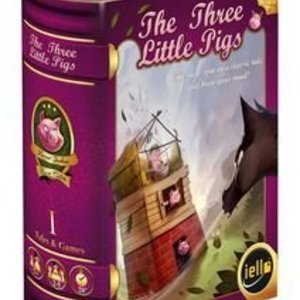Search
Search results
Kirk Bage (1775 KP) rated Marriage Story (2019) in Movies
Mar 3, 2020
To say I found this hard to watch could not be more understated. Any adult that has risked their whole life on a true love that runs its course and then fails must surely feel the same. It happens to most of us once or twice in a lifetime, and resonates forever. Such is the level of truth and sadness on display in Noah Baumbach’s beautifully written and directed tale of two people in turmoil, whose biggest obstacle is not one another, but the dispassion and ineffectiveness of legality, and even friends and family, to resolve big issues of a personal nature.
As with the obvious reference point of the seminal take on divorce, Robert Benton’s 1979 Oscar winner Kramer Vs. Kramer, the point is not at all about taking sides and choosing a winner… because everyone loses in a break-up. The only thing you can hope is that it doesn’t tear the child / children apart, and that at least some memory of the love that once was isn’t entirely forgotten. You also hope that you will survive, once you realise you are not part of a whole any more, and you must now figure out who you are and where to go. Even the grief of death is sometimes not as devastating. And this beyond mature film acknowledges that.
Not that it is all doom and gloom. There is some real humour and joy wrapped up inside the detail of Marriage Story’s script. As you would expect from the guy who gave us the massively under-rated The Squid and the Whale, from 2005. It assumes an emotional intelligence similar to the best films of Woody Allen, with which he clearly shares some sense of creative style and sensibility. But let’s not open that can of worms at this juncture.
The idea that Scarlett Johansson can even be thought of as a double Oscar nominee this year may be galling to some naysayers, but it comes as no surprise to me at all. Despite a career touching on the lighter side of cinema, there are some bold artistic choices in there too, and personally I have always seen that potential. As Nicole, she not only creates a fully rounded character different from anything I have ever seen her do; believable and interesting in every way, but also holds her own against one of the major talents working in film today – Mr Adam Driver. And that is no mean feat! Another balance comparison that can be made to the epic battle of Streep Vs Hoffman, decades before. And as with Streep before her, there are moments where we entirely see her side of things and stop questioning male vs female politics and just see the person battling underneath it all.
However, and not remotely because I am likely to relate to the male point of view, the work Adam Driver is doing here is close to transcendent! I have made no secret of wanting Joaquin Phoenix to win every accolade going for his turn in Joker. And what a shame the two have to be compared, because Driver’s work here is second to none! I find it so completely exciting for the future of cinema that he is out there doing his thing – evidently, it is about as breath-taking as screen acting has ever been!
It is not only his ability to convey vulnerability and humanity in every role he takes on; it his control that really impresses. To such an extent that I begin to wonder if there is anything he could not do better than 99% of anyone working today, if well cast. Make no mistake, at any level, this is one of hell of a talent, making the right choices in the roles he does at almost every crossroads. Consider the latest Star Wars trilogy without him, and ponder what weak popcorn fare it might have been without him?
Marriage Story as a complete piece is worthy of dissection and multiple re-watches. I am happy to say that, only hours after seeing it myself. There simply isn’t a doubt. As a serious commentary on break-ups then it may be, at the moment, tertiary in my mind to both the aforementioned Kramer Vs Kramer and the sickeningly sad Blue Valentine. But, it is perhaps more real than either of those, and will certainly build in my psyche as time passes.
In conclusion: Yes! I have no inclination to fault it. And may have more to say at a different point…
As with the obvious reference point of the seminal take on divorce, Robert Benton’s 1979 Oscar winner Kramer Vs. Kramer, the point is not at all about taking sides and choosing a winner… because everyone loses in a break-up. The only thing you can hope is that it doesn’t tear the child / children apart, and that at least some memory of the love that once was isn’t entirely forgotten. You also hope that you will survive, once you realise you are not part of a whole any more, and you must now figure out who you are and where to go. Even the grief of death is sometimes not as devastating. And this beyond mature film acknowledges that.
Not that it is all doom and gloom. There is some real humour and joy wrapped up inside the detail of Marriage Story’s script. As you would expect from the guy who gave us the massively under-rated The Squid and the Whale, from 2005. It assumes an emotional intelligence similar to the best films of Woody Allen, with which he clearly shares some sense of creative style and sensibility. But let’s not open that can of worms at this juncture.
The idea that Scarlett Johansson can even be thought of as a double Oscar nominee this year may be galling to some naysayers, but it comes as no surprise to me at all. Despite a career touching on the lighter side of cinema, there are some bold artistic choices in there too, and personally I have always seen that potential. As Nicole, she not only creates a fully rounded character different from anything I have ever seen her do; believable and interesting in every way, but also holds her own against one of the major talents working in film today – Mr Adam Driver. And that is no mean feat! Another balance comparison that can be made to the epic battle of Streep Vs Hoffman, decades before. And as with Streep before her, there are moments where we entirely see her side of things and stop questioning male vs female politics and just see the person battling underneath it all.
However, and not remotely because I am likely to relate to the male point of view, the work Adam Driver is doing here is close to transcendent! I have made no secret of wanting Joaquin Phoenix to win every accolade going for his turn in Joker. And what a shame the two have to be compared, because Driver’s work here is second to none! I find it so completely exciting for the future of cinema that he is out there doing his thing – evidently, it is about as breath-taking as screen acting has ever been!
It is not only his ability to convey vulnerability and humanity in every role he takes on; it his control that really impresses. To such an extent that I begin to wonder if there is anything he could not do better than 99% of anyone working today, if well cast. Make no mistake, at any level, this is one of hell of a talent, making the right choices in the roles he does at almost every crossroads. Consider the latest Star Wars trilogy without him, and ponder what weak popcorn fare it might have been without him?
Marriage Story as a complete piece is worthy of dissection and multiple re-watches. I am happy to say that, only hours after seeing it myself. There simply isn’t a doubt. As a serious commentary on break-ups then it may be, at the moment, tertiary in my mind to both the aforementioned Kramer Vs Kramer and the sickeningly sad Blue Valentine. But, it is perhaps more real than either of those, and will certainly build in my psyche as time passes.
In conclusion: Yes! I have no inclination to fault it. And may have more to say at a different point…
Lee (2222 KP) rated Sonic the Hedgehog (2020) in Movies
Feb 17, 2020
It’s been a very long time since I played the Sonic the Hedgehog video games on my brothers SEGA Megadrive. I was, and always have been, a Nintendo guy, so since then my only experience of Sonic has been when he joins forces with Mario and Co for Mario and Sonic at the Olympic Games. I do have good memories of his solo outings though, and he is clearly an enduring and popular character, ideally suited for a CGI/live action movie.
When we first meet Sonic, he’s a young hedgehog on his home world, zipping about the place without a care in the world and being mentored by an owl called Longclaw. Before we get a chance to learn anything about Longclaw and the world that he and Sonic inhabit, some bad guy echidnas show up, looking to get their hands on Sonic and his speedy powers. Longclaw gives Sonic a bag of rings that can be used to open a portal to another world, and after opening one for him to escape through, tells him to use one whenever he is in danger of being captured.
Cut to Green Hills, Montana where we meet local sheriff Tom Wachowski (James Marsden) and his wife Maddie (Tika Sumpter). Tom has been accepted, pending background checks, into the San Francisco police department, and he and Maddie are currently in the process of looking at houses there. We also learn that a now grown up Sonic has found his way into our world and has been living in hiding in Green Hills for some time now. The local crazy old man, Crazy Carl, claims to have seen a ‘blue devil’ on a number of occasions, but otherwise Sonic has managed to stay hidden. He’s even got himself a little underground man cave, and has become quite attached to Tom and Maddie, observing and following their every day lives from afar.
When Sonic manages to cause a city-wide power outage one evening, he draws the attention of the government, who bring in mad scientist Dr Robotnik (Jim Carrey) to investigate. When the gold rings that Sonic needs to transport to another world are mislaid, and as Robotnik and his team close in on him, Sonic makes himself known to an unsuspecting Tom and asks for his help. The movie then becomes a road trip, with them both on the run, evading Dr Robotnik and searching for the gold rings.
The CGI representation of Sonic had been something of a hot talking point, ever since the release of the first trailer sparked a huge online backlash. Looking more human, with smaller eyes, and longer limbs, the reaction of horror by anyone vaguely familiar with the character was enough to make director Jeff Fowler stand up and take notice, and the release date of the movie was pushed back to allow for some serious rework by the VFX team. Thankfully, when the new trailer was released, it was to a much more positive reaction, and rightfully so - Sonic was now much more aligned to his video game persona and on the receiving end of some pretty decent marketing material and promotion to back it all up. Ben Schwartz provides the voice for Sonic, giving him a wonderful childlike quality - in awe of the world around him, funny and confident in his abilities, but never really coming across as an annoying brat.
Jim Carrey brings to Robotnik the kind of madcap comedy that he we haven’t seen from him in a long time and is a delight in every scene he features. James Marsden is no stranger to appearing alongside CGI characters in children’s movies, and does his part well once again. Outside of that, the rest of the cast don’t get much to work with and kind of just fade into the background.
Overall, Sonic the Hedgehog is a fairly enjoyable movie, but it’s also instantly forgettable. It’s been a couple of days since I saw it and, apart from a couple of fun action scenes along the way, and the climactic showdown, I really don’t remember very much about it. If you’ve seen the wonderful scenes in the X-Men movies where QuickSilver zips around, interacting with characters and scenery as though time has stood still, then there are a few scenes just like that for you to enjoy. It’s a much better movie than I was expecting to see, but ultimately I think it could have been a hello a lot worse if they’d stuck to their guns with the original character design.
When we first meet Sonic, he’s a young hedgehog on his home world, zipping about the place without a care in the world and being mentored by an owl called Longclaw. Before we get a chance to learn anything about Longclaw and the world that he and Sonic inhabit, some bad guy echidnas show up, looking to get their hands on Sonic and his speedy powers. Longclaw gives Sonic a bag of rings that can be used to open a portal to another world, and after opening one for him to escape through, tells him to use one whenever he is in danger of being captured.
Cut to Green Hills, Montana where we meet local sheriff Tom Wachowski (James Marsden) and his wife Maddie (Tika Sumpter). Tom has been accepted, pending background checks, into the San Francisco police department, and he and Maddie are currently in the process of looking at houses there. We also learn that a now grown up Sonic has found his way into our world and has been living in hiding in Green Hills for some time now. The local crazy old man, Crazy Carl, claims to have seen a ‘blue devil’ on a number of occasions, but otherwise Sonic has managed to stay hidden. He’s even got himself a little underground man cave, and has become quite attached to Tom and Maddie, observing and following their every day lives from afar.
When Sonic manages to cause a city-wide power outage one evening, he draws the attention of the government, who bring in mad scientist Dr Robotnik (Jim Carrey) to investigate. When the gold rings that Sonic needs to transport to another world are mislaid, and as Robotnik and his team close in on him, Sonic makes himself known to an unsuspecting Tom and asks for his help. The movie then becomes a road trip, with them both on the run, evading Dr Robotnik and searching for the gold rings.
The CGI representation of Sonic had been something of a hot talking point, ever since the release of the first trailer sparked a huge online backlash. Looking more human, with smaller eyes, and longer limbs, the reaction of horror by anyone vaguely familiar with the character was enough to make director Jeff Fowler stand up and take notice, and the release date of the movie was pushed back to allow for some serious rework by the VFX team. Thankfully, when the new trailer was released, it was to a much more positive reaction, and rightfully so - Sonic was now much more aligned to his video game persona and on the receiving end of some pretty decent marketing material and promotion to back it all up. Ben Schwartz provides the voice for Sonic, giving him a wonderful childlike quality - in awe of the world around him, funny and confident in his abilities, but never really coming across as an annoying brat.
Jim Carrey brings to Robotnik the kind of madcap comedy that he we haven’t seen from him in a long time and is a delight in every scene he features. James Marsden is no stranger to appearing alongside CGI characters in children’s movies, and does his part well once again. Outside of that, the rest of the cast don’t get much to work with and kind of just fade into the background.
Overall, Sonic the Hedgehog is a fairly enjoyable movie, but it’s also instantly forgettable. It’s been a couple of days since I saw it and, apart from a couple of fun action scenes along the way, and the climactic showdown, I really don’t remember very much about it. If you’ve seen the wonderful scenes in the X-Men movies where QuickSilver zips around, interacting with characters and scenery as though time has stood still, then there are a few scenes just like that for you to enjoy. It’s a much better movie than I was expecting to see, but ultimately I think it could have been a hello a lot worse if they’d stuck to their guns with the original character design.

Deep Sleep and Relaxation Hypnosis- Cure Insomnia
Medical and Lifestyle
App
Does it work? 3.5 million people have used Mindifi's Deep Sleep and Relaxation hypnosis, a #1...
Illeana Douglas recommended In a Lonely Place (1950) in Movies (curated)
Ivana A. | Diary of Difference (1171 KP) rated Would I Lie to the Duke (Union of the Rakes, #2) in Books
Oct 5, 2020
<a href="https://amzn.to/2Wi7amb">Wishlist</a>; | <a
<a href="https://diaryofdifference.com/">Blog</a>; | <a href="https://www.facebook.com/diaryofdifference/">Facebook</a>; | <a href="https://twitter.com/DiaryDifference">Twitter</a>; | <a href="https://www.instagram.com/diaryofdifference/">Instagram</a>; | <a
<a href="https://ko-fi.com/diaryofdifference">Ko-fi</a>;
<img src="https://i2.wp.com/diaryofdifference.com/wp-content/uploads/2020/09/Book-Review-Banner-35.png?resize=768%2C432&ssl=1"/>;
Thank you to Mills & Boon, for sending me a copy of Would I Lie to the Duke by Eva Leigh, and for the opportunity to participate on this blog tour.
Would I Lie to the Duke by Eva Leigh is the second book in the Union of the Rakes series. It can be easily read as a standalone though.
<b><i>Synopsis:</i></b>
This is the story of Jessica McGale. Her family business is in need of investors, after it collapses due to a fire. Jessica is determined to acquire investors for her business at any cost. When she realises that London’s elite will never give a chance to a humble farm girl like herself, she does the unthinkable. She poses as “Lady Whitfield” and joins the elite on the table. She especially tries to get close to the Duke of Rotherby, as his influence and support could save her company. But one thing Jess never expected to happen, is to grow feelings for him.
Noel is the carefree and notorious duke, but only his close friends truly know him. When he meets Lady Whitfield at the business bazaar, his world shifts. She makes him want to obey every command she tells, which is something he never imagined doing. He struggles to trust people, but trusting Jess is so easy.
But what happens when the business bazaar is over, and so is the fake portrayal of Lady Whitfield? How do you cope when someone has lied to you, but you want them in your life forever? Read this amazing book to find out!
<b><i>My Thoughts:</i></b>
I was so hooked about this book, and I finished it in two days. While the plot is a bit predictable and it has a Cinderella vibe to it, I still enjoyed it a lot.
I could completely understand where Jess was coming from, and in order to save her business, I don’t think there were any other options, given how much rejection she faced in the first chapters. But as soon as she started developing feelings, she should’ve been honest with Noel. The person in me felt uncomfortable for her every single time she would deliberately put herself in an awkward situation and not tell the truth when she had a chance to. And the business trip to the farm? Oh, that got me biting my nails again. I also understand that continuing with the deception was a crucial part of the plot, to produce the drama that it did, but I am just not a fan of dishonesty.
<b><i>Noel was an amazing character, even though, at times, he seemed like the typical rich boy.</i></b>
I loved the way his relationship with Jess progressed during the couple of days, and how he started opening up. Honestly, I didn’t believe it at first, given that it was based on a lie. I thought that given the fact how much trust issues he had, he could never get past her betrayal. And for me, his way of coping and resolving the issue didn’t fit with his character. I have the feeling that people who are lucky enough to have a high income and live in the elite societies are much more wary of “gold diggers”, and everything Jess does (even though for a good reason), seems to be for her business. So I wouldn’t have blamed him if he reacted in a way more different way and just told her to “bugger off”.
Overall, I enjoyed Would I Lie to the Duke and it was a very pleasurable short read to get me away from reality. I don’t always dive into historical romance, and this was a surprising change that ended on a positive note. Honestly, I am glad that it sparks a debate in my mind and makes me think of “what I would have done” on either side of the relationship. I would have acted very differently. And maybe that’s the reason I’m not married to a duke (yet).
<a href="https://diaryofdifference.com/">Blog</a>; | <a href="https://www.facebook.com/diaryofdifference/">Facebook</a>; | <a href="https://twitter.com/DiaryDifference">Twitter</a>; | <a href="https://www.instagram.com/diaryofdifference/">Instagram</a>; | <a
<a href="https://ko-fi.com/diaryofdifference">Ko-fi</a>;
<img src="https://i2.wp.com/diaryofdifference.com/wp-content/uploads/2020/09/Book-Review-Banner-35.png?resize=768%2C432&ssl=1"/>;
Thank you to Mills & Boon, for sending me a copy of Would I Lie to the Duke by Eva Leigh, and for the opportunity to participate on this blog tour.
Would I Lie to the Duke by Eva Leigh is the second book in the Union of the Rakes series. It can be easily read as a standalone though.
<b><i>Synopsis:</i></b>
This is the story of Jessica McGale. Her family business is in need of investors, after it collapses due to a fire. Jessica is determined to acquire investors for her business at any cost. When she realises that London’s elite will never give a chance to a humble farm girl like herself, she does the unthinkable. She poses as “Lady Whitfield” and joins the elite on the table. She especially tries to get close to the Duke of Rotherby, as his influence and support could save her company. But one thing Jess never expected to happen, is to grow feelings for him.
Noel is the carefree and notorious duke, but only his close friends truly know him. When he meets Lady Whitfield at the business bazaar, his world shifts. She makes him want to obey every command she tells, which is something he never imagined doing. He struggles to trust people, but trusting Jess is so easy.
But what happens when the business bazaar is over, and so is the fake portrayal of Lady Whitfield? How do you cope when someone has lied to you, but you want them in your life forever? Read this amazing book to find out!
<b><i>My Thoughts:</i></b>
I was so hooked about this book, and I finished it in two days. While the plot is a bit predictable and it has a Cinderella vibe to it, I still enjoyed it a lot.
I could completely understand where Jess was coming from, and in order to save her business, I don’t think there were any other options, given how much rejection she faced in the first chapters. But as soon as she started developing feelings, she should’ve been honest with Noel. The person in me felt uncomfortable for her every single time she would deliberately put herself in an awkward situation and not tell the truth when she had a chance to. And the business trip to the farm? Oh, that got me biting my nails again. I also understand that continuing with the deception was a crucial part of the plot, to produce the drama that it did, but I am just not a fan of dishonesty.
<b><i>Noel was an amazing character, even though, at times, he seemed like the typical rich boy.</i></b>
I loved the way his relationship with Jess progressed during the couple of days, and how he started opening up. Honestly, I didn’t believe it at first, given that it was based on a lie. I thought that given the fact how much trust issues he had, he could never get past her betrayal. And for me, his way of coping and resolving the issue didn’t fit with his character. I have the feeling that people who are lucky enough to have a high income and live in the elite societies are much more wary of “gold diggers”, and everything Jess does (even though for a good reason), seems to be for her business. So I wouldn’t have blamed him if he reacted in a way more different way and just told her to “bugger off”.
Overall, I enjoyed Would I Lie to the Duke and it was a very pleasurable short read to get me away from reality. I don’t always dive into historical romance, and this was a surprising change that ended on a positive note. Honestly, I am glad that it sparks a debate in my mind and makes me think of “what I would have done” on either side of the relationship. I would have acted very differently. And maybe that’s the reason I’m not married to a duke (yet).
BankofMarquis (1832 KP) rated Joker (2019) in Movies
Oct 10, 2019
Joaquin's Performance Elevates This Film
Give Joaquin Phoenix the Oscar right now. His bravura performance as the titular character in JOKER is one for the ages. He is on the screen in every scene of this film and captivates and repulses you at the same time. This performance raises this film to another level.
The question is - what level was this film at, and where does this performance raise it to?
Set in Gotham City right around the time of the murder of Bruce Wayne's parents, JOKER tells the origin story of...well...a character that calls himself JOKER. This sad sack, with the name of Arthur Fleck, is a part-time clown (standing outside of store closings with a spinning sign or going to Children's Hospital). We watch his origins as he rises (or perhaps...falls?) to the anarchic symbol that is JOKER. And that's the interesting thing about this film. You are watching the fall of a man and the rise of a symbol - does Fleck find comfort or madness in this journey - or, perhaps, maybe he finds comfort in madness?
Embodying this broken spirit that keeps getting up despite whatever beatings (sometimes physical, sometimes mental, always with the potential to finally break him) is the unique talent that is Joaquin Phoenix. You can tell from his portrayal of Arthur that there is something just "off" with him and you continually wait for the breaking point that will drive him down the road of JOKER. But it is not only his acting that is on display here, it the manipulation and movements of his body that is amazing and outstanding. Much like a professional dancer, Phoenix/Fleck waltzes through this film like there is a musical score that only he can hear - and that is both fascinating and disturbing at the same time. There is a fine line that needs to be trod here, for if you don't, this character and performance can easily be one of total madness (a.k.a. Jack Nicholson as Jack Torrance in the SHINING) but Phoenix balances sanity/insanity very well and you are waiting for the final blow that will send him, inevitably, over the edge. It's like watching a ticking time bomb that you cannot see the clock counting down to zero - but count down to zero you are sure it will do.
Exchanging blows with Phoenix for about 1/3 of this film is Robert DeNiro as talk show host Murray Franklin (think a meaner version of Johnny Carson). DeNiro is VERY good in this role and it is good to see that he still can "bring it" as a serious actor when he wants to. Unfortunately, DeNiro's character isn't really in the first 2/3 of this film and that's too bad. Phoenix' Arthur Fleck is a force to be reckoned with and he really could have used another character just as strong to play against.
Unfortunately, Writer/Director Todd Phillips (THE HANGOVER films) doesn't really give Phoenix anyone strong to play against for the first 2/3 of this film though Frances Conroy (overbearing mother), Zazie Beetz (potential love interest) and Brett Cullen (billionaire Thomas Wayne, father of Bruce) come and go in all too brief appearances that never really are on screen long enough to stand their ground (though Conroy comes close). This makes the first part of this film very on-sided, dreary, depressing and dark. I get that Director/Writer Phillips was going for the "Decaying of Gotham" theme as seen through the eyes of Fleck, but it became a slog after awhile. I wanted to yell at the screen at about the 1 hour mark "All right, I get it!"
Now...to give Phillips credit, he creates an interesting version of this world that we all know well (through the Dark Knight and various other DC Universe films), so I give him points for originality. And...he really NAILS the ending (the last 1/3 of the film - the part WITH DeNiro). I thought it was effective and potent and left it's mark.
Which brings me back to my opening thought. Phoenix raises this film up with his performance - the question is "from where to where". I'd have to say (because of the slowness of the first 2/3 of this film) that Phoenix fearless performance raises this dark and dreary film from a "C" to a "B". So with that in mind, I give JOKER...
Letter Grade: B
7 (out of 10) stars and you can take that to the Bank(ofMarquis)
The question is - what level was this film at, and where does this performance raise it to?
Set in Gotham City right around the time of the murder of Bruce Wayne's parents, JOKER tells the origin story of...well...a character that calls himself JOKER. This sad sack, with the name of Arthur Fleck, is a part-time clown (standing outside of store closings with a spinning sign or going to Children's Hospital). We watch his origins as he rises (or perhaps...falls?) to the anarchic symbol that is JOKER. And that's the interesting thing about this film. You are watching the fall of a man and the rise of a symbol - does Fleck find comfort or madness in this journey - or, perhaps, maybe he finds comfort in madness?
Embodying this broken spirit that keeps getting up despite whatever beatings (sometimes physical, sometimes mental, always with the potential to finally break him) is the unique talent that is Joaquin Phoenix. You can tell from his portrayal of Arthur that there is something just "off" with him and you continually wait for the breaking point that will drive him down the road of JOKER. But it is not only his acting that is on display here, it the manipulation and movements of his body that is amazing and outstanding. Much like a professional dancer, Phoenix/Fleck waltzes through this film like there is a musical score that only he can hear - and that is both fascinating and disturbing at the same time. There is a fine line that needs to be trod here, for if you don't, this character and performance can easily be one of total madness (a.k.a. Jack Nicholson as Jack Torrance in the SHINING) but Phoenix balances sanity/insanity very well and you are waiting for the final blow that will send him, inevitably, over the edge. It's like watching a ticking time bomb that you cannot see the clock counting down to zero - but count down to zero you are sure it will do.
Exchanging blows with Phoenix for about 1/3 of this film is Robert DeNiro as talk show host Murray Franklin (think a meaner version of Johnny Carson). DeNiro is VERY good in this role and it is good to see that he still can "bring it" as a serious actor when he wants to. Unfortunately, DeNiro's character isn't really in the first 2/3 of this film and that's too bad. Phoenix' Arthur Fleck is a force to be reckoned with and he really could have used another character just as strong to play against.
Unfortunately, Writer/Director Todd Phillips (THE HANGOVER films) doesn't really give Phoenix anyone strong to play against for the first 2/3 of this film though Frances Conroy (overbearing mother), Zazie Beetz (potential love interest) and Brett Cullen (billionaire Thomas Wayne, father of Bruce) come and go in all too brief appearances that never really are on screen long enough to stand their ground (though Conroy comes close). This makes the first part of this film very on-sided, dreary, depressing and dark. I get that Director/Writer Phillips was going for the "Decaying of Gotham" theme as seen through the eyes of Fleck, but it became a slog after awhile. I wanted to yell at the screen at about the 1 hour mark "All right, I get it!"
Now...to give Phillips credit, he creates an interesting version of this world that we all know well (through the Dark Knight and various other DC Universe films), so I give him points for originality. And...he really NAILS the ending (the last 1/3 of the film - the part WITH DeNiro). I thought it was effective and potent and left it's mark.
Which brings me back to my opening thought. Phoenix raises this film up with his performance - the question is "from where to where". I'd have to say (because of the slowness of the first 2/3 of this film) that Phoenix fearless performance raises this dark and dreary film from a "C" to a "B". So with that in mind, I give JOKER...
Letter Grade: B
7 (out of 10) stars and you can take that to the Bank(ofMarquis)

POOW The Food Hero
Health & Fitness and Medical
App
POOW The Food Hero is a tool for parents / healthcare to help and use to support and motivate...
Purple Phoenix Games (2266 KP) rated Tales & Games: The Three Little Pigs in Tabletop Games
Aug 18, 2020
The Wolf always gets a bad rap. Think of all the stories you know that include an anthropomorphic wolf and tell me three that show The Wolf in a positive light. Can’t think of any? Me neither. But they need to eat to survive and it’s tough in these streets! errm, trees! Such is the plight of The Wolf in this one, as he is attempting to wrest the Little Pigs out of their hidey-holes so he can have a nice bacon dinner. And honestly, who can blame him? Bacon!
Tales & Games: The Three Little Pigs (which I will fondly refer to as 3LP for the remainder of this review) is a cute little family dice and take-that game about building houses for maximum points while avoiding The Wolf’s hungry advances. The winner of the game is the Little Piggy who has built the most complete structures using the best materials that afford them the most endgame points.
To setup, sort the building tiles by material type and house level type as shown inside the box cover. Place the dice and spinner nearby. Let the youngest or cutest player go first. The game is now ready to be played!
On a player’s turn they will roll all the dice Yahtzee-style (so with two re-roll attempts), and the remainder of the turn is based on what is rolled. Players are not required to re-roll, but must stop once two or more Wolf symbols are rolled, or after the second re-roll. The player may then use the dice to purchase house materials corresponding to what was rolled. If three doors are rolled, a player may purchase a straw door (which cost two door symbols) or a wooden door (which cost three door symbols). These house parts can be of mixed materials, so once the pieces have been purchased, house construction can then be done.
Should a player roll The Wolf, then the “breath” spinner will be spun. The player who rolled The Wolf dice will choose an opponent AND one of their houses to target. Spin the spinner and destroy all matching pieces in their house. Some children have issues with this, but hey, they should have built more brick sections! Play continues in this fashion taking turns rolling and purchasing and building until several stacks of house sections are gone (depending on player count). All incomplete houses are crumbled, and piggy faces on standing houses are scored to determine the victor! When playing with my kiddo I don’t use the bonus cards, but they are available if playing with older and more strategic players.
Components. As this is one of the famed (and first in the line) Tales & Games Bookshelf games, it has set a standard for the series. These games come in boxes that look like books on the outside, open like a book, and contain a story to be read as a prelude to the game, if wished. The box is very very cool, and the insert is pink and wonderfully designed. The house tiles are thick and colorful, and the pink dice are just a joy to roll. I love the components in this one!
So obviously this is a game really designed to target younger gamers. And though it says 7+ on the box, I have successfully played this with my 3 year old with zero issues. He loves it, and in turn, makes me love it too. Now, I will certainly not pull this out at any given Game Night with adults (unless we have gamer spouses or friends who have NEVER played modern games at all). However, I really do enjoy playing it with my son for now, and for super-newbies. It is colorful, light on rules, offers some choices, and of course, has a touch of luck and take-that. All this while still feeling like you are in the story of The Three Little Pigs. So I say, if you were ever on the fence with this one – get it. Play it with whomever you like and just enjoy it. It is light enough with just a touch of adultness to keep you smiling. But don’t invite your Twilight Imperium or Mage Knight friends. They won’t like it. We at Purple Phoenix Games know how to get down with the simpler games as well, so that’s why we give this one a blown-over 9 / 12.
Tales & Games: The Three Little Pigs (which I will fondly refer to as 3LP for the remainder of this review) is a cute little family dice and take-that game about building houses for maximum points while avoiding The Wolf’s hungry advances. The winner of the game is the Little Piggy who has built the most complete structures using the best materials that afford them the most endgame points.
To setup, sort the building tiles by material type and house level type as shown inside the box cover. Place the dice and spinner nearby. Let the youngest or cutest player go first. The game is now ready to be played!
On a player’s turn they will roll all the dice Yahtzee-style (so with two re-roll attempts), and the remainder of the turn is based on what is rolled. Players are not required to re-roll, but must stop once two or more Wolf symbols are rolled, or after the second re-roll. The player may then use the dice to purchase house materials corresponding to what was rolled. If three doors are rolled, a player may purchase a straw door (which cost two door symbols) or a wooden door (which cost three door symbols). These house parts can be of mixed materials, so once the pieces have been purchased, house construction can then be done.
Should a player roll The Wolf, then the “breath” spinner will be spun. The player who rolled The Wolf dice will choose an opponent AND one of their houses to target. Spin the spinner and destroy all matching pieces in their house. Some children have issues with this, but hey, they should have built more brick sections! Play continues in this fashion taking turns rolling and purchasing and building until several stacks of house sections are gone (depending on player count). All incomplete houses are crumbled, and piggy faces on standing houses are scored to determine the victor! When playing with my kiddo I don’t use the bonus cards, but they are available if playing with older and more strategic players.
Components. As this is one of the famed (and first in the line) Tales & Games Bookshelf games, it has set a standard for the series. These games come in boxes that look like books on the outside, open like a book, and contain a story to be read as a prelude to the game, if wished. The box is very very cool, and the insert is pink and wonderfully designed. The house tiles are thick and colorful, and the pink dice are just a joy to roll. I love the components in this one!
So obviously this is a game really designed to target younger gamers. And though it says 7+ on the box, I have successfully played this with my 3 year old with zero issues. He loves it, and in turn, makes me love it too. Now, I will certainly not pull this out at any given Game Night with adults (unless we have gamer spouses or friends who have NEVER played modern games at all). However, I really do enjoy playing it with my son for now, and for super-newbies. It is colorful, light on rules, offers some choices, and of course, has a touch of luck and take-that. All this while still feeling like you are in the story of The Three Little Pigs. So I say, if you were ever on the fence with this one – get it. Play it with whomever you like and just enjoy it. It is light enough with just a touch of adultness to keep you smiling. But don’t invite your Twilight Imperium or Mage Knight friends. They won’t like it. We at Purple Phoenix Games know how to get down with the simpler games as well, so that’s why we give this one a blown-over 9 / 12.
Emma @ The Movies (1786 KP) rated La La Land (2016) in Movies
Jun 2, 2020
Let me give you the background on this one. Many years ago (when La La Land was due out in the cinemas) ITV2 were showing the new series of Scorpion in their prime time drama spot, this feature was sponsored by something and quite often that's a film. For the season's entire run it was sponsored by... you guessed it... La La Land. Every episode you'd have to see up to 8 clips of the film without any real context about what it was, and worst of all there was very little deviation, you could be seeing the same clip over and over again for 20 or so episodes. I love musicals and I love Emma Stone but this pushed me so far over the edge that I swore I'd never watch it. (The same goes for Moulin Rouge which I also now have to watch) Evidently though I'm a grown ass adult and can't hold petty grudges against films so now I have to watch them... partially so I can make other people watch films they don't want to watch in an underhanded deal on Twitter.
But I digress.
When Mia and Sebastian's lives cross unexpectedly it is impossible to know how much the future will change for both of them. What at first is a wholesome whirlwind of romance begins to fall apart as their careers progress and pull them apart.
At its heart it's a simple romance story for Mia and Sebastian as they build each other up for the lives they want and the perils that that brings, but when you add the extra depth into it all with the music it takes on a whole other dimension. As a spoiler alert for my take on the film, at one point I had to stop and I just wrote in my notes "oh god, why am I crying?!" That wasn't a feeling I had throughout the film though, in fact, straight off the bat I thought I was going to hate the film because of that opening musical number. That number made no impact on me and I was massively concerned, thankfully that didn't hold true for the next number.
On the acting... Emma Stone is glorious and should be in everything... end of review... okay, fine. I loved the way she made Mia come to life, she's fun, got some sass to her and I loved the way she behaved through her auditions. Emma Stone may be my spirit animal, I absolutely love her.
And then there's Ryan Gosling... As an indication of how I feel about him please accept this reenactment of a recent conversation:
Friend: Did you see they're talking about the new Wolfman movie?
Me: Oh my god, really?! Yay! It'll be great!
Friend: Yeah, it's going to have Ryan Gosling in it!
Me: *crickets chirp and a tumbleweed bounces past*
His acting does nothing for me. It's very much the Brad Pitt style of acting without the humour, he always acts the same way, but... I would genuinely say this is the first of his films I've seen where it felt like he was acting. I genuinely enjoyed him in it, it didn't feel like he was hiding all his emotions in a box in his dressing room. I was so thankful.
The chemistry between the pair was brilliant and that really helped carry me through the film. With lots of musical numbers and elaborate looking sets to deal with I was worried that it might end up looking more like theatre than film, it obviously does have that vibe because that's part of the idea but it flowed incredibly well.
La La Land has a wonderful feel to it with vibrant sets and costumes, it gives a glow of the old school and this works incredibly well with the jazz side of the story. This, however, is part of my main problem with the film.
You've got the golden age vibe with the colours and the music, but the modern creeps in everywhere and I wasn't a fan of this mix. Every time it popped up I noticed it and it made me frown. That being said, I don't know if it would have worked being an entirely modern film but it could easily have gone back in time and lived happily ever after.
Even with me disliking that part of the film's story I really enjoyed watching La La Land. It's stunning visually, the music is (mainly) beautiful and I was incredibly surprised by the acting. The moral of this story is don't let excessive advertising put you off something.
Originally posted on: https://emmaatthemovies.blogspot.com/2020/06/la-la-land-movie-review.html
But I digress.
When Mia and Sebastian's lives cross unexpectedly it is impossible to know how much the future will change for both of them. What at first is a wholesome whirlwind of romance begins to fall apart as their careers progress and pull them apart.
At its heart it's a simple romance story for Mia and Sebastian as they build each other up for the lives they want and the perils that that brings, but when you add the extra depth into it all with the music it takes on a whole other dimension. As a spoiler alert for my take on the film, at one point I had to stop and I just wrote in my notes "oh god, why am I crying?!" That wasn't a feeling I had throughout the film though, in fact, straight off the bat I thought I was going to hate the film because of that opening musical number. That number made no impact on me and I was massively concerned, thankfully that didn't hold true for the next number.
On the acting... Emma Stone is glorious and should be in everything... end of review... okay, fine. I loved the way she made Mia come to life, she's fun, got some sass to her and I loved the way she behaved through her auditions. Emma Stone may be my spirit animal, I absolutely love her.
And then there's Ryan Gosling... As an indication of how I feel about him please accept this reenactment of a recent conversation:
Friend: Did you see they're talking about the new Wolfman movie?
Me: Oh my god, really?! Yay! It'll be great!
Friend: Yeah, it's going to have Ryan Gosling in it!
Me: *crickets chirp and a tumbleweed bounces past*
His acting does nothing for me. It's very much the Brad Pitt style of acting without the humour, he always acts the same way, but... I would genuinely say this is the first of his films I've seen where it felt like he was acting. I genuinely enjoyed him in it, it didn't feel like he was hiding all his emotions in a box in his dressing room. I was so thankful.
The chemistry between the pair was brilliant and that really helped carry me through the film. With lots of musical numbers and elaborate looking sets to deal with I was worried that it might end up looking more like theatre than film, it obviously does have that vibe because that's part of the idea but it flowed incredibly well.
La La Land has a wonderful feel to it with vibrant sets and costumes, it gives a glow of the old school and this works incredibly well with the jazz side of the story. This, however, is part of my main problem with the film.
You've got the golden age vibe with the colours and the music, but the modern creeps in everywhere and I wasn't a fan of this mix. Every time it popped up I noticed it and it made me frown. That being said, I don't know if it would have worked being an entirely modern film but it could easily have gone back in time and lived happily ever after.
Even with me disliking that part of the film's story I really enjoyed watching La La Land. It's stunning visually, the music is (mainly) beautiful and I was incredibly surprised by the acting. The moral of this story is don't let excessive advertising put you off something.
Originally posted on: https://emmaatthemovies.blogspot.com/2020/06/la-la-land-movie-review.html







